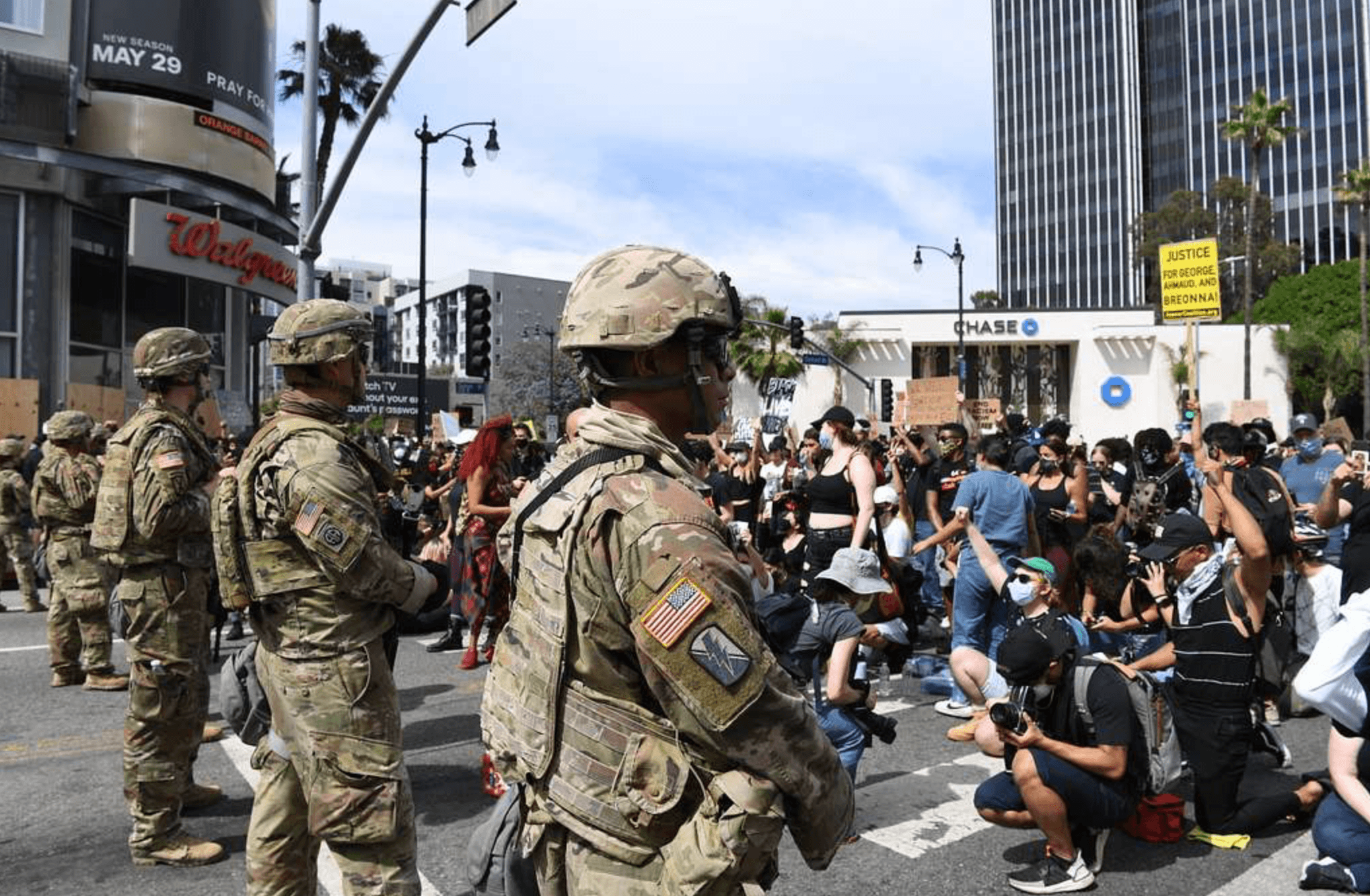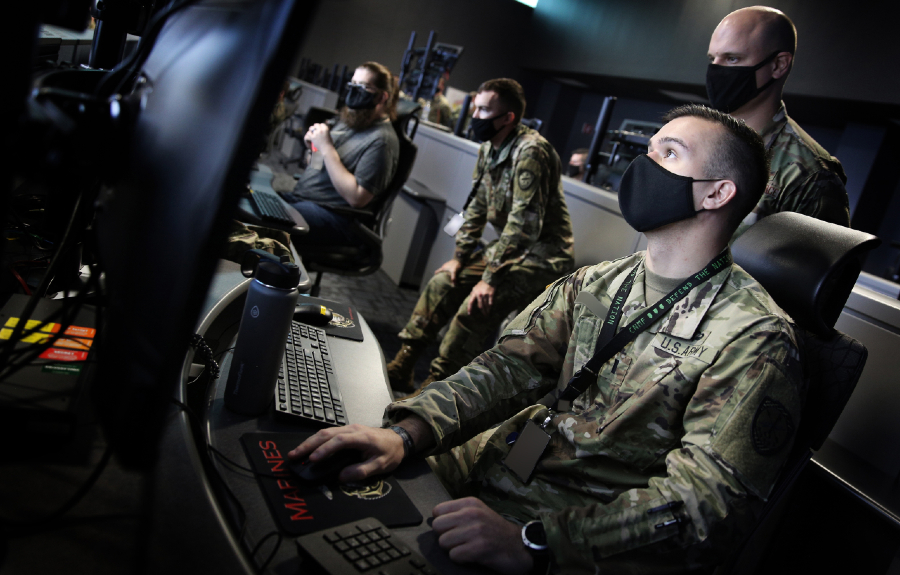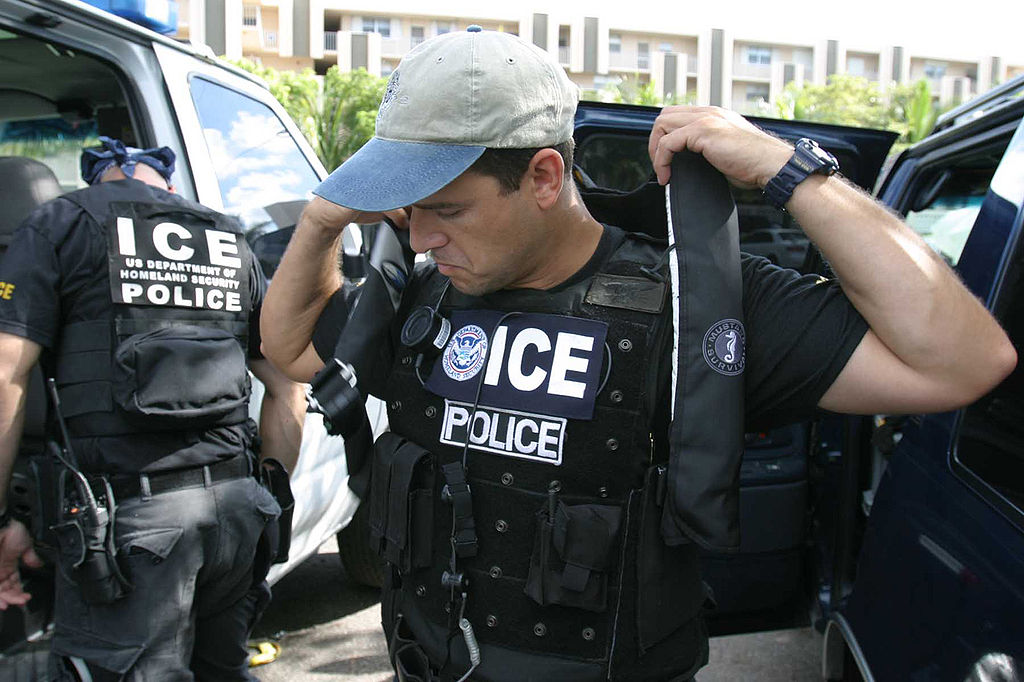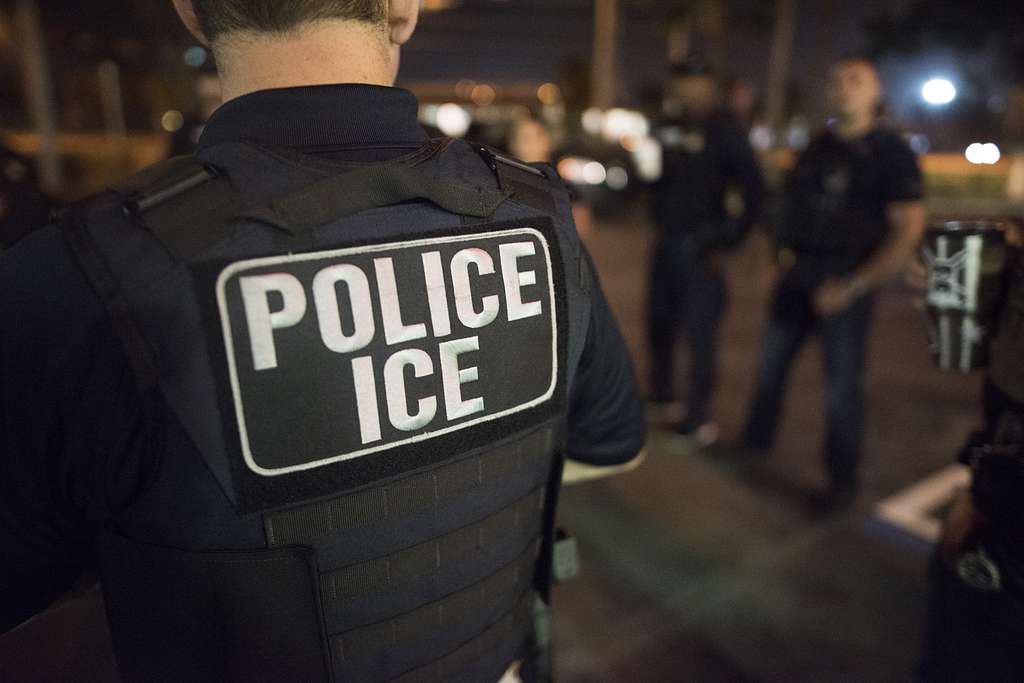No, Trump Doesn’t Need Governors’ Consent to Deploy the National Guard

Published by The Lawfare Institute
in Cooperation With

Any day now, the Supreme Court will decide whether the president may federalize and deploy National Guard troops to a state over a governor’s objection. Although there may be legal grounds for blocking the Trump administration’s actions, the mere absence of a governor’s consent is not one of them. The statute on which President Trump’s orders rely—and the constitutional power from which it derives—has never given states a veto.
The case, Trump v. Illinois, arises from the president’s planned deployment of troops to Chicago but also implicates his orders deploying Guard units in Los Angeles and Portland, Oregon. In each instance, President Trump has invoked 10 U.S.C. § 12406, a statute that authorizes the president to call the National Guard into federal service whenever a part of the nation faces the threat of invasion or rebellion, or when the “the President is unable with the regular forces to execute the laws of the United States.”
In their briefs to the Court, both Illinois and California contend that the president’s orders are unconstitutional, in part because the states’ governors did not consent to the deployments. Absent such consent, they argue, federalizing National Guard units commandeers state institutions for federal law-enforcement ends in violation of the 10th Amendment. This structural argument is flawed. Section 12406’s text requires no such consent, and the history behind it shows that no such requirement was ever intended. Far from impinging on state sovereignty, the power exercised by the Trump administration is among the federal government’s few and defined prerogatives enumerated in the Constitution. If the statute’s predicates are satisfied, state consent is legally irrelevant.
Tracing the statute’s lineage—from the Constitutional Convention in 1787 to its present-day codification in U.S. Code Title 10—shows that states have never possessed a veto over the federalization and use of the National Guard to execute federal law.
The Original Non-intent for Requiring State Consent
The constitutional basis for the statute at issue is found in Article I, Section 8, which empowers Congress “[t]o provide for calling forth the Militia”—today known as the National Guard—“to execute the Laws of the Union, suppress Insurrections and repel Invasions.” In the summer of 1787, the Constitution’s framers debated whether this and related powers should depend on states’ consent. They decided it should not.
Before discussing what would become the “calling forth” clause, delegates to the Constitutional Convention considered a similar draft clause that would have authorized Congress “to subdue a rebellion in any State,” but only “on the application of its [i.e., the state’s] legislature.” Influential delegates Charles Pinckney of South Carolina and Pennsylvania’s Gouverneur Morris moved to strike this proposed state-consent requirement. Maryland’s John Francis Mercer, fellow Marylander Luther Martin, and Elbridge Gerry of Massachusetts—none of whom signed the Constitution and each of whom later opposed its ratification—argued it would be “dangerous and unnecessary” to introduce federal forces without the “consent of the state.” Echoing arguments made by states and judges today that the deployments might inflame unrest more than dampen it, Gerry suggested that “more blood would have been spilt” in the then-recent Shays’s Rebellion had federal forces intervened.
When Connecticut’s Oliver Ellsworth suggested conditioning this power on the approval of the state’s governor, Morris again objected to any requirement for state consent. “The Executive [of a state] may possibly be at the head of the Rebellion,” after all. He reasoned that the federal government must be able to “enforce obedience in all cases where it may be necessary,” including when state officials themselves obstruct federal law. William Langdon of Massachusetts agreed. If states knew they had no recourse to reject federal forces, the mere “apprehension” of such deployments would “have a salutary effect in preventing insurrections.” After an affirmative vote to dispense with the requirement for state consent, the delegates struck the draft clause entirely, likely because they realized it would be redundant to the more expansive calling forth clause ultimately adopted.
Records of the subsequent debate strongly suggest that the framers rejected a state-consent requirement for this latter clause as well. Because the drafters understood the two clauses as overlapping, once they had rejected a consent requirement for the aborted “subdue rebellion” clause, that decision seemingly applied equally to the calling forth clause. For example, in his exhaustive diatribe against the Constitution, Martin lamented that, despite an “amendment [he] endeavored to obtain,” Congress’s power “for the calling forth of the militia” could be exercised “without the consent of the legislature of such state.” Though the calling forth clause was unanimously adopted on August 23, 1787—well before Martin departed the Convention on Sept. 3—extant records provide no evidence of Martin’s amendment proposal. In fact, the calling forth clause triggered no discussion over state consent at all.
Had the convention’s delegates wanted to grant states the power to veto militia mobilization, the first draft of the “subdue rebellion” clause shows they knew how. The evidence suggests that, having already litigated and lost the matter with respect to the closely related stricken clause, Martin and company reasonably concluded the convention rejected state consent as a check on the calling forth power, too. “As [the calling forth clause] stands now,” Martin worried, Congress could “march the whole militia of Maryland to the remotest part of the Union” without either his home state’s blessing or the receiving state’s invitation.
The ratification debates, where the clause first received sustained debate, confirmed Martin’s interpretation. At Virginia’s convention, for example, Constitutional Convention delegate-turned-staunch Anti-Federalist George Mason demanded “some restrictions” on Congress’s power to deploy Virginia’s militia to quell a disturbance in New Hampshire. Because all agreed the clause did not contain “such a check,” he pushed for an “amendment” to the Constitution that would require “the consent of the state legislature” before sending or receiving militiamen.
A few years later, Martin and Mason’s fears were partly realized. As it turned out, it would not be Congress but the president who would march militias (in one instance, personally) across states. The Constitution did not exactly empower Congress to call forth the militia, after all, but instead to “provide for calling [it] forth,” suggesting it could legislate the mechanism through which such calls would be executed. But Martin and Mason were correct when they surmised that the federal government could mobilize and march those militias without state input.
From Article I to Section 12406: Delegating Decisions to the President, Not States
Militia Act of 1792: State Consent Not Needed to Enforce Obstructed Federal Law
A mere four years after the Constitution was ratified, Congress passed the Militia Act of 1792, delegating to the president the Article I authority to call forth militias. As in Article I, the act (and all its statutory successors) specified three conditions precedent for calling forth the militia. Section 1 of the act governed the use of militias to (a) repel invasions and (b) suppress insurrections, while Section 2 outlined the procedure for using the militia to (c) enforce federal laws wherever “obstructed, in any state, by combinations too powerful to be suppressed by the ordinary course of judicial proceedings.”
When delegating that power, Congress did impose some conditions on its exercise. But none of those conditions—even if they had survived later legislative reforms—imply that President Trump needs gubernatorial consent to use the National Guard to execute federal law today.
To repel an invasion under the 1792 Militia Act, the president could summon militiamen from, and deploy them to, any state he deemed most convenient. In the case of domestic insurrections, or rebellions, however, the president could deploy militias to the assailed state only upon an invitation from its legislature (or the governor, when the state’s “legislature cannot be convened”). Put differently, the Third Congress imposed on the president the kind of state-consent requirement, if only in cases of suppressing rebellions, that Martin and company had failed to impose on Congress. Crucially, this consent provision applied only when the rebellion was directed against a state’s own government, not when the federal government sought to enforce federal laws within that state. Moreover, this consent provision disappeared entirely by 1903, when the Militia Act was substantially revised. Finally, to enforce federal law when “obstructed,” the president first needed certification from a federal judge that civil authority was inadequate, thereby introducing a judicial check.
It is the 1792 Act’s second and third predicates—the danger of rebellion (now codified at 10 U.S.C. § 12406(2)) and the president’s inability to execute federal law with regular forces (§ 12406(3))—that President Trump invokes today. Under the 1792 act, the president’s power under the rebellion scenario was dependent on a state’s application for assistance; as explained below, that is no longer the case. The president’s power to use the militia to execute federal law, however, has never been—not in 1792 nor since—conditional on state consent. Even if one thought the 1792 act’s state-consent requirement vis-a-vis suppressing rebellions somehow survived, President Trump could safely rely on § 12406(3) alone to federalize National Guard units over state objections.
President Washington’s response to the Whiskey Rebellion in 1794 confirms as much. When civil unrest erupted across western Pennsylvania in reaction to federal attempts to collect an excise tax on distilled liquor, Washington could credibly have pointed to, well, a rebellion within the state. Instead, his proclamation cited obstruction of federal law, noted Supreme Court Justice James Wilson’s certification of such obstruction, and made no mention of any “application” from Pennsylvania (which would have been required had he called forth the militia to suppress an insurrection). In short, when Washington led a 13,000-man force—drawn from Pennsylvania, New Jersey, and, yes, Mason’s Virginia and Martin’s Maryland—he did so under the 1792 act’s Section 2, the direct statutory ancestor of § 12406(3). Although Washington reportedly delayed action to secure Pennsylvania Gov. Thomas Mifflin’s cooperation for practical and political reasons, the state’s consent was legally irrelevant.
Congress Removes Judicial and State Checks on Militia Use
In the aftermath of the Whiskey Rebellion, Congress made it even easier for the president to call forth the militia—removing any requirement for state consent. The Militia Act of 1795 eliminated the 1792 act’s judicial-certification requirement for the president to federalize militias to enforce obstructed federal law. By the time Congress enacted the Militia Act of 1903 (the Dick Act), references to state “applications” disappeared, too. Thereafter, whether repelling invasion, suppressing insurrection, or enforcing federal law, the president no longer needed a state’s blessing to federalize and deploy “the organized military, to be known as the National Guard.” This framework, recodified through statutes in 1908, 1956, 1994, and 2006, endures today in 10 U.S.C § 12406.
Critics sometimes point to § 12406’s procedural coda—providing that “orders for these purposes shall be issued through the governors of the States”—as evidence of an extant state-consent requirement. It is not. It would be strange for Congress to refer to presidential “orders” if it meant to imply the president’s invocation of the statute was merely a request for state forces. It would be stranger still for Congress to remove constraints on the president’s use of this power, from 1795 onward, only to reintroduce a state veto even stronger than the one that existed in 1792 (when state applications were only necessary to suppress rebellions against a state). It is much more plausible to read the procedural requirement as simply identifying the channel through which federalization orders should be transmitted, given the National Guard’s dual federal-state character.
The Constitution gives Congress wide latitude to call the militia into service when federal law is being obstructed. Its delegation of that power, first in 1792 and today through § 12406(3), has never been subject to a state’s veto.
Calling Forth Checks on the Power?
What checks, then, can control the calling forth power? At Virginia’s ratifying convention, James Madison provided one answer. Asked why Congress needed the power to call forth the militia “to put the laws of the union into execution,” Madison supposed the reasons were “so obvious” they hardly merited mentioning. “If resistance should be made to the execution of the laws,” Madison responded matter-of-factly, “it ought to be overcome.” Better that such resistance be overcome “by the people”—the citizen-soldiers of the militias—than by a “standing army” that would imperil republican government. To guard against abuse of this power, the Constitution reserved to states the power to appoint militia officers while vesting command of them in a president indirectly chosen by the people. His interlocutors were unimpressed and demanded an amendment requiring state consent.
But if the safeguards Madison mentioned sound naive to us today, we may have a problem of presidential selection more than one of defective law. A president’s domestic use of military forces—whether National Guard, active duty, or some combination—can be for good or ill, and whether states consent or not is far from dispositive. There is a long and much vaunted history of presidents deploying military forces into states without gubernatorial consent—indeed, over the personal resistance of governors. President Eisenhower famously invoked the Insurrection Act to federalize the Arkansas National Guard after Gov. Orval Faubus had used it to block Black students from entering Little Rock Central High School. Presidents Kennedy and Johnson similarly used the Insurrection Act, over governors’ objections, to enforce federal civil rights law in the deep South.
Despite these celebrated uses of military force against states, there are compelling reasons to narrow or even repeal the Insurrection Act today. Some of those reasons may apply also to § 12406, which has historically been invoked alongside (not, as here, in lieu of) the Insurrection Act.
But in the interim, the Court must decide Trump v. Illinois with the law as it currently exists. In so doing, it has conceivable paths to checking the president’s domestic deployments. It might modify—or even overturn—its 1827 precedent interpreting § 12406’s statutory predecessor, where it held that the president’s determination of an exigency triggering his delegated calling-forth power was “exclusive” and “conclusive.” It may then take the view that courts can in fact second-guess President Trump’s findings—as some lower courts have—that a “danger of rebellion” exists in Chicago or that he is “unable with the regular forces” (whoever those forces are) to execute U.S. immigration law in Los Angeles.
What the Court cannot hold, without betraying the law’s text and history, is that the governors’ objections alone may block National Guard deployments to their states.





